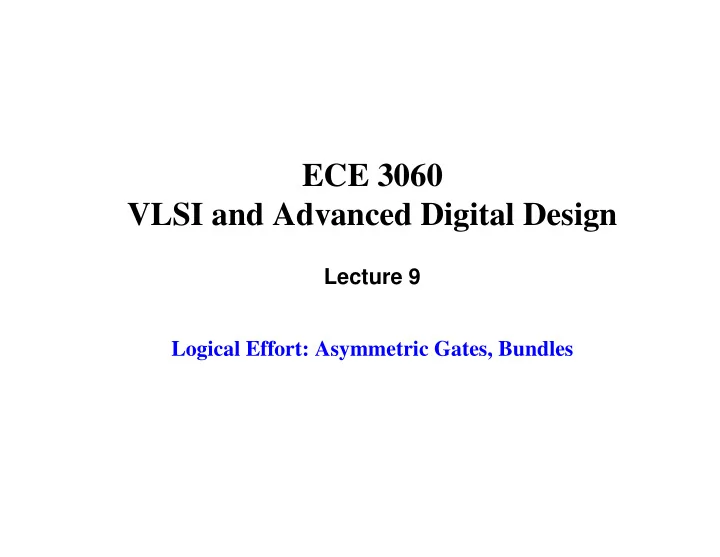

ECE 3060 VLSI and Advanced Digital Design Lecture 9 Logical Effort: Asymmetric Gates, Bundles
More Notation • It turns out, we do not need to fix p-fets to be twice as wide as n-fets (See chapter 7) • Let be defined as the ratio of p-fet width to n-fet γ width in an inverter. Then LE can be defined in terms of . γ • So far we have defined LE specifically on a per input basis. • The text introduces additional terms: • The logical effort per bundle is the sum of the logical efforts of related signals s s • Example: A signal and its complement are both inputs to a s * gate. This input bundle is called . • Total logical effort is the sum of the logical effort of all inputs to a gate. ECE 3060 Lecture 9–2
Asymmetric Gates • Consider and AOI21: • Note that input has lower logical effort (5/3 vs 2) than c or . a b ECE 3060 Lecture 9–3
Multiplexors • There are many styles of MUX design. They can be designed using logic networks, or they can be designed using tri-state devices. • Consider the inverting MUX shown here: • What is logical effort per select bundle, data input, and total logical effort? ECE 3060 Lecture 9–4
XOR2 Gate • Consider the two input XOR • Total logical effort? • Logical effort/bundle? • Logical effort/input ( )? g ECE 3060 Lecture 9–5
Symmetric XOR3 • Total logical effort? • Logical effort/bundle? • Logical effort/input ( )? g ECE 3060 Lecture 9–6
Asymmetric XOR3 • Total logical effort? • Logical effort/bundle? • Logical effort/input ( )? g ECE 3060 Lecture 9–7
Recommend
More recommend